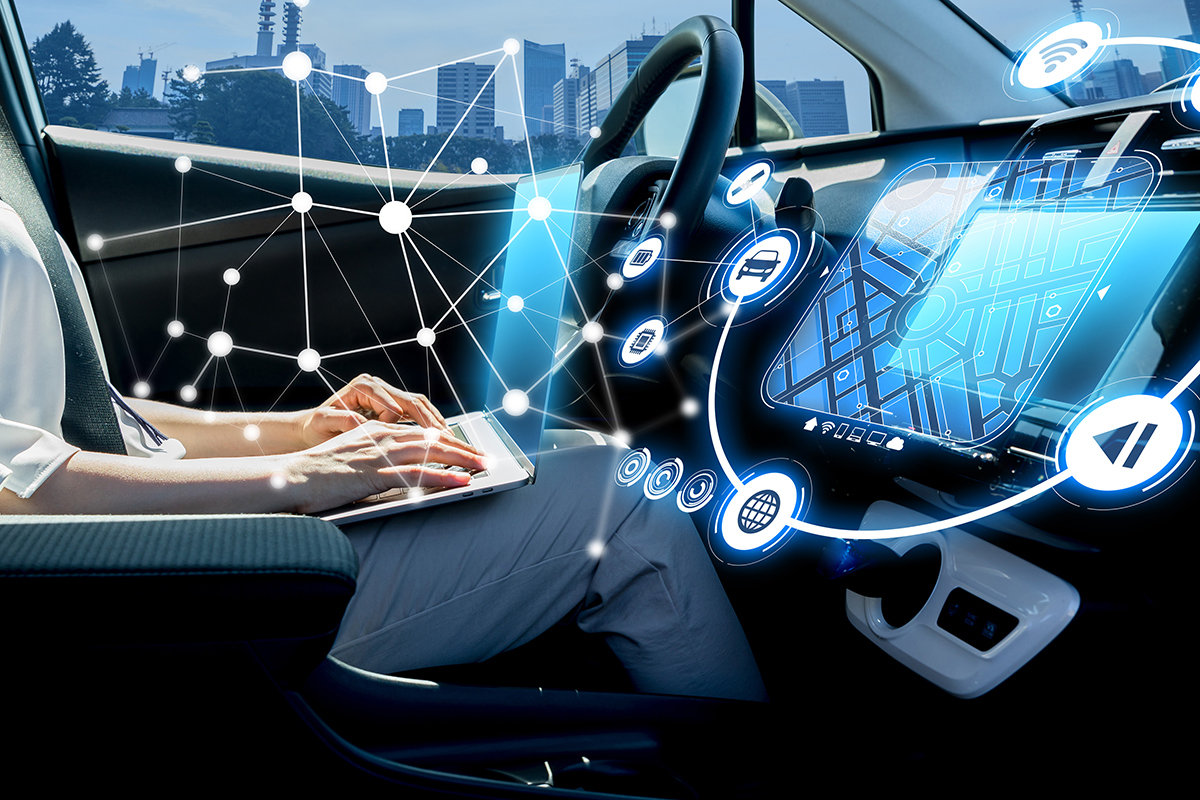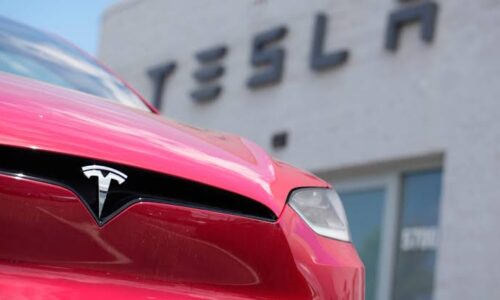- Judith Akatugba
- 0 Comments
- 602 Views
Hey there!
The fast development of car technology gadgets in the past few years has caused a revolution in the automobile sector. The way we drive is being transformed by these cutting-edge devices and systems, which improve road safety, comfort, and efficiency. Let’s take a look at a few of the most important automobile tech items right now.
Read Also: French FDJ proposes $2.8 billion for Swedish online gambling firm Kindred
Crucial automotive technological devices
I) ADAS: ADASs are game-changing technologies for the car industry. Using a network of sensors, cameras, and processing power, these state-of-the-art technologies aim to make driving easier and safer. What follows is an in-depth examination of ADAS and its parts:
The first of the Advanced Driver Assistance Systems (ADAS) is Adaptive Cruise Control (ACC), which is a crucial part of these systems. It uses radar or sensors to automatically control the speed of a vehicle, keeping it at a safe distance from the one ahead of it. This device has the capability to automatically slow down or speed up the vehicle, making driving more easier, especially on highways.
1.2 Lane-Keeping Assist (LKA): These systems assist drivers in staying within their lanes by monitoring lane lines using cameras. With the help of LKA, a car that starts to swerve without signaling can be gently guided back into its lane.
1.3 Blind-Spot Monitoring (BSM): BSM uses sensors to detect vehicles in blind spots, or areas that are not directly in front of the driver. Then, the system alerts the driver either visually or aurally. This feature helps reduce the likelihood of accidents that may occur when changing lanes.
1.4 Automated Emergency Braking (AEB): AEB systems detect possible collision hazards by continuously monitoring the road ahead using a combination of cameras and sensors. If the driver doesn’t react quickly enough, the system can detect a danger and start braking on its own, reducing or preventing the collision.
1.5 Automated Parking Systems and Parking Sensors: ADAS encompasses a wide range of parking assistance. When parking, sensors can detect nearby obstructions using radar or ultrasonic technologies and alert the driver. With the help of automated parking technologies, parallel and perpendicular parking becomes a piece of cake.
1.6 TSR: Cameras used by TSR systems can detect and interpret traffic signals like speed limits, stop signs, and no-entry signs. To keep drivers informed about the road conditions, they then show this data on the dashboard or head-up display.
1.7 Traffic Jam Assist and Lane Centering: These features enhance lane-keeping assist by actively guiding the car to stay in its lane, even in situations where the traffic is in a constant state of change. They make commuting more pleasant by reducing the driver’s effort in crowded settings.
1.8 ADAS Systems with Pedestrian and Cyclist Detection Capabilities You may find ADAS systems that have the ability to identify pedestrians and cyclists. In order to avoid accidents, these systems may detect when other drivers are in danger and either apply the brakes suddenly or sound an alarm.
1.9 Driver Monitoring Systems: Advanced Driver Assistance Systems (ADAS) include driver monitoring systems that use sensors and cameras to track the driver’s awareness and focus. The system can send notifications or suggest taking a break if it detects signs of being distracted or tired.
The second topic is infotainment systems, which have become standard in modern cars thanks to their ability to enhance the driving experience through the seamless integration of media, data, and communication. For the convenience of the driver and passengers, these systems offer a wide range of features. We explore the fundamentals and benefits of infotainment systems in this section.
In-dashscreen touchscreen screens are the nerve center of most modern infotainment systems. These touchscreens offer a user-friendly interface with a range of capabilities, and they come in different sizes and with different functions.
2.2. GPS Navigation with Real-Time Traffic Updates: This feature is commonly seen in infotainment systems. They can provide you with detailed instructions, highlights along the way, and even alternative routes to help you save time on your trip.
Infotainment systems are compatible with smartphone integration platforms like as Android Auto and Apple CarPlay, which brings us to point number two on the topic. With this feature, drivers can minimize distractions by mirroring their smartphone’s interface on the infotainment screen. This gives them access to apps, music, contacts, and voice commands.
2.4. Media and Sound: Infotainment systems manage sources of audio, including satellite radio, AM/FM radio, CD/DVD players, USB drives, Bluetooth streaming, and music applications. Equalizer settings for fine-tuning audio quality are also commonly found on these devices.
2.5. Voice Recognition: To encourage drivers to keep both hands on the wheel, many infotainment systems have voice recognition technology that lets them make calls, send messages, and enter navigational locations just by speaking into the device.
2.6. Ports for Connection: Infotainment systems often include USB ports, AUX inputs, and even wireless charging pads so users can charge and connect their gadgets on the go.
Web browsing and over-the-air software updates are made possible by some vehicles’ built-in 4G LTE or 5G connectivity (2.7). The vehicle also has a hotspot that passengers can use to connect their gadgets and surf the web.
2.8. Rear-Seat Entertainment: Some infotainment systems have extra capabilities that passengers in the back can use, including screens to play games, watch movies, or access other audio sources.
2.9. Vehicle Data: These systems make it easy to retrieve vital vehicle data, such as gas mileage, tire pressure, maintenance reminders, and more. Vehicle condition and health can be tracked in real-time by drivers.
Thirdly, there’s connected car technology, which is a huge step forward for the car business since it turns regular cars into online computers. There are a lot of advantages and possibilities for drivers and car companies thanks to this technology, which uses the Internet of Things (IoT) to link cars to the web. A comprehensive overview of linked automobile technology and its essential parts is presented here:
Section 3.1: The Telematics Control Unit (TCU): This hardware component allows the vehicle to communicate with external networks; it is the brains of the connected car technology. TCUs can send and receive data thanks to their cellular modems and GPS receivers.
3.2. Remote Diagnostics: Hybrid vehicles have the capability to conduct diagnostics from a distance, allowing for constant monitoring of the vehicle’s status and efficiency. Proactive maintenance and faster problem resolution are made possible when the system sends diagnostic data to the automaker or a certified service center when an issue arises.
3.3. Updates to Software Transmitted Over-the-Air (OTA): With linked cars, getting software upgrades over-the-air is a huge plus. There will be less need for in-person service visits thanks to this capability, which allows automakers to remotely distribute improvements, security patches, and bug fixes to vehicles.
The third section, “3.4. Vehicle Tracking and Recovery,” discusses how connected auto systems that use GPS may monitor the whereabouts of a vehicle in real time. For both fleet management and stolen car recovery, this tool is a lifesaver.
3.5. Emergency Services (eCall): When an accident occurs, connected automobiles have the capability to automatically notify emergency services. They can provide important details including the location of the vehicle and the severity of the impact. This function has the potential to save lives by drastically decreasing reaction times.
3.6. Connectivity and Infotainment: Modern connected vehicles come equipped with state-of-the-art infotainment systems that allow drivers to do things like surf the web, stream music, and use apps. While traveling, passengers have the option to stay connected and engaged.
3.7. Predictive Maintenance: Data from connected automobile sensors and systems can be used to anticipate when components might break. Preventing breakdowns and lowering repair costs are also possible outcomes of this preventative maintenance strategy.
3.8. In-Car Wi-Fi Hotspots: A lot of linked cars come with Wi-Fi hotspots already installed, so your gadgets can stay online even when you’re on the go.
3.9. Vehicle-to-Cloud Communication: Data acquired from connected vehicles can be sent to the cloud for analysis and subsequent usage in areas such as traffic management, navigation system development, and driving experience improvement.
In sum:
To sum up, state-of-the-art technology is driving a revolutionary change in the automotive business. Driving is changing as a result of innovations like advanced driver assistance systems (ADAS), infotainment systems (IMS), and connected car technology (CCT), which transform cars into smart, networked beings. With the rapid advancement of technology, the sector is well-positioned to lead us into a future of transportation that prioritizes safety, connectivity, and environmental sustainability.











